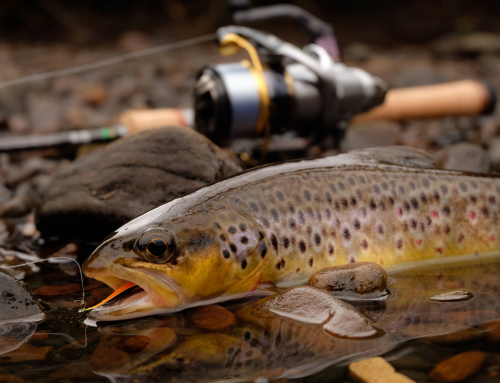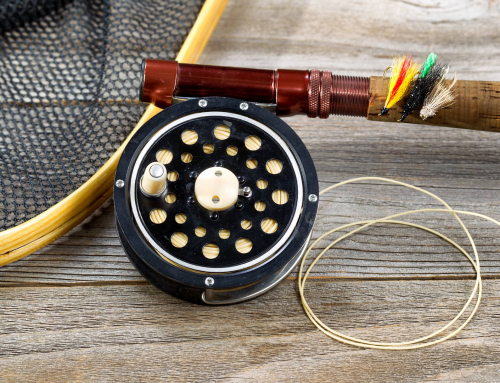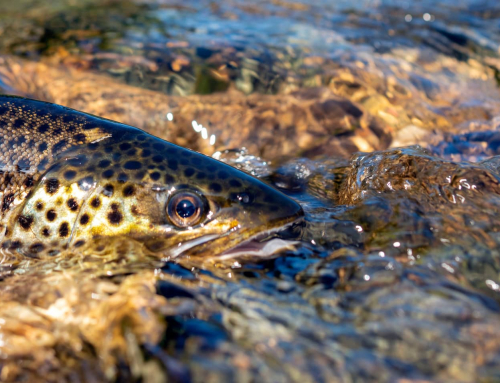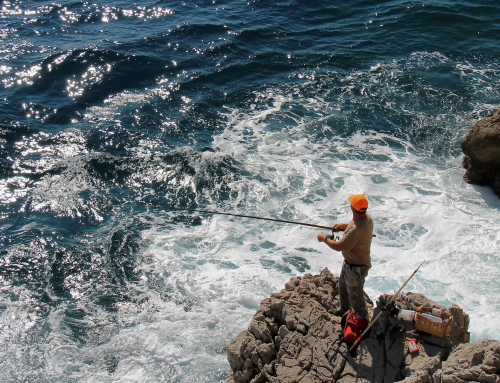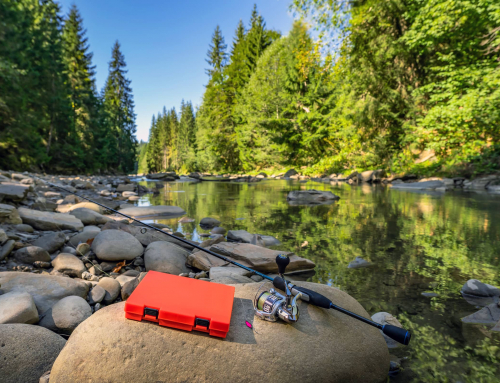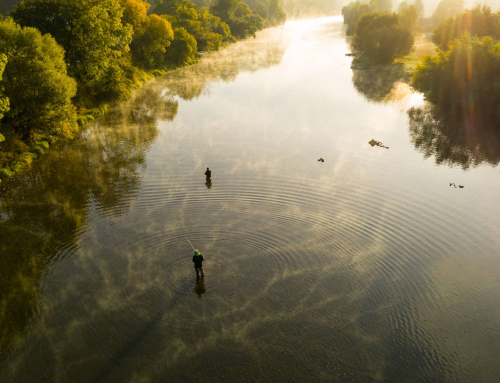We may earn money or products from the companies mentioned in this post at no additional cost to you.
What exactly is a Tippet?
Fly fishing is a bit more complicated than traditional angling. In traditional angling, fishermen use one type and weight of line for all casting and retrieval but not with fly fishing. The idea behind fly fishing is creating a system that puts your fly on the water with as little disturbance as possible, which you can’t get with traditional angling methods.
If you want to get your fly on the water without spooking the fish, you’ll need a lightweight and nearly invisible way to cast your fly – you need a tippet. Let’s learn more about fly fishing tippets, including what they are, why they’re necessary, and how they’re different from leaders.
Fly Fishing Basics
To understand what a tippet is, you need a basic understanding of a traditional fly-fishing setup. Fly fish lines consist of backing line, tied to a fly line, tied to a leader, tied to a tippet, and tied to your fly. Each part of the fly-fishing setup has a purpose.
Backing – Fly line backing is the first type of line to go on your reel and is anchored directly to the reel’s arbor. The backing is normally manufactured from braided polyester. Your fly line’s backing helps fill in the reel and provides a sturdy lifeline if you hook a big fish. Backing is not 100% necessary for fly fishing, but it’s recommended, especially for saltwater fly fishing.
Fly Line – The main portion of the fly-reel setup. Fly line is weighted to help the fly fisher cast the line to the target area. Fly line is one weight.
Leader – After the weighted fly line comes the leader. The leader is a tapered line that starts off at its thickest before tapering down to the tippet. Because the leader is clear and thin, it doesn’t spook fish who are eyeing your fly.
Tippet – The end of the fly line and portion that your fly is tied to. Tippets are the thinnest portion of the fly setup, which allows your fly to drift and move naturally on the water without disturbing target fish.
Fly Fishing Leader vs. Tippet
Leader and tippet are two of the most commonly confused parts of a fly fish line setup. Though all leaders and tippets are tied after the main fly line, they serve different purposes and must be tied in a specific order. Leader tapers from thick to thin while the tippet is one thickness. If you tie your tippet after your leader, you’ll have a difficult time casting out and attracting fish.
Types of Fly-Fishing Tippets
Most fly-fishing tippets are monofilament lines produced from a variety of materials. Let’s review the pros and cons of the most common tippets.
Fluorocarbon Tippet – Fluorocarbon is sturdy, easy to detangle, and will stay strong despite tying and untying. You can use fluorocarbon all day, and it won’t lose its strength. Fluorocarbon can be monofilament or braided and is recommended for saltwater fly fishing.
Nylon tippet – Nylon makes for a great all-around tippet. Nylon is affordable, comes in varying weights, and is easy to tie into strong knots. Nylon floats more efficiently than the fluorocarbon line, which makes it an excellent choice for dry flies. Nylon is known to absorb more water than fluorocarbon line but typically does not affect fishing.
Monofilament Tippet – Monofilament means the tippet is made with one line. Monofilament most often refers to nylon tippet.
Finding the Right Tippet
Size – Ideally, you want to match your tippet to your leader and fly line.
Type of Fish – Match the tippet to the kind of fish you’re looking to target
Length – Where you’re fishing can help determine your tippet’s length.
Online Fly-Fishing Resources – Thanks to online resources, you can learn almost everything there is to know about your next fishing spot before you even drive there. Type your fishing destination into your favorite search engine for more information on the right equipment, including what type of tippet you need.
Local Fly-Fishing Resources – The best way to find the right type of tippet is by talking to local resources like local fly shops. Fly shops are much more than a place to purchase fishing equipment, they’re local experts on fly-fishing. A reputable fly-fishing outlet can let you know what the local fish population is doing, and how to match the right tippet for a successful angling adventure.
Get the Right Tippet and Get Fly Fishing Today
Fly fishing might be more complicated than traditional angling, but fly fishers wouldn’t have their hobby and lifestyle any other way. To land the best fish, you need the right type of tippet, which could include nylon, fluorocarbon, and different weights. Now that you know what tippets are, you’ll be ready to pick the right one and land a lunker on your next trip.
